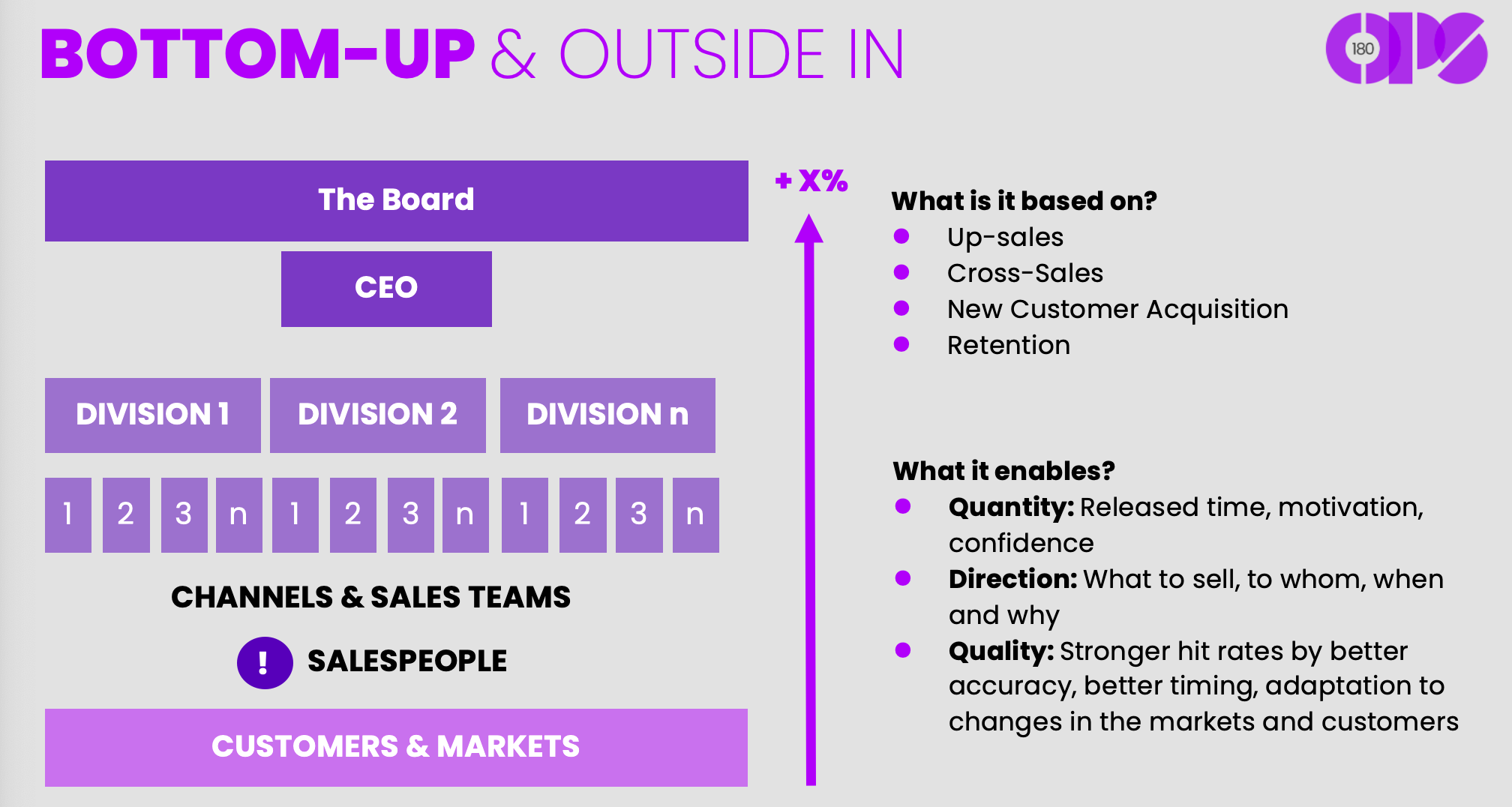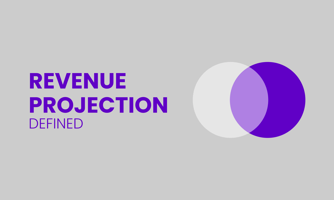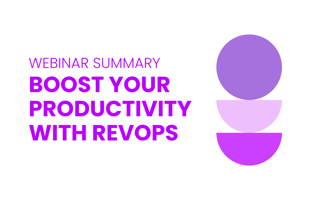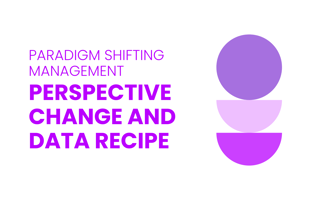Revenue Projection is an expected billing level for existing customers by month for the next 12...
Webinar summary: Win in your 2024 sales budgeting
In this webinar we focused on finding answers to better sales budgeting for 2024. We did this by finding answers to four key questions. See the summary and full webinar recording below.
the main takeaways are:
- To plan for 2024 based on facts and data: Plan bottom-up or enable people to perform with bottom-up advice.
- To actually get to your quotas: Know where and why you allocate your time. Answer motivate and enable success.
- Providing your sales teams with the right tools to succeed: Is all about making sure they have answers where they are needed, and easily usable.
- To continuously monitor, learn and react to changes: You need three types of data and AI/ML tools to make sense of changes.
REVOPS BOOST WEBINAR IN ARTICLE:
the regular approach to sales budgeting and quota setting
We are constantly talking to CEOs, CFOs, CSOs and CMOs and the regular approach to budgeting is very similar from one company to the next. The board and the upper management make an analysis on the macro economic trends and current level of success and decide on the goal figure. Very often it can be summarised as an excel spreadsheet on past year + x%.
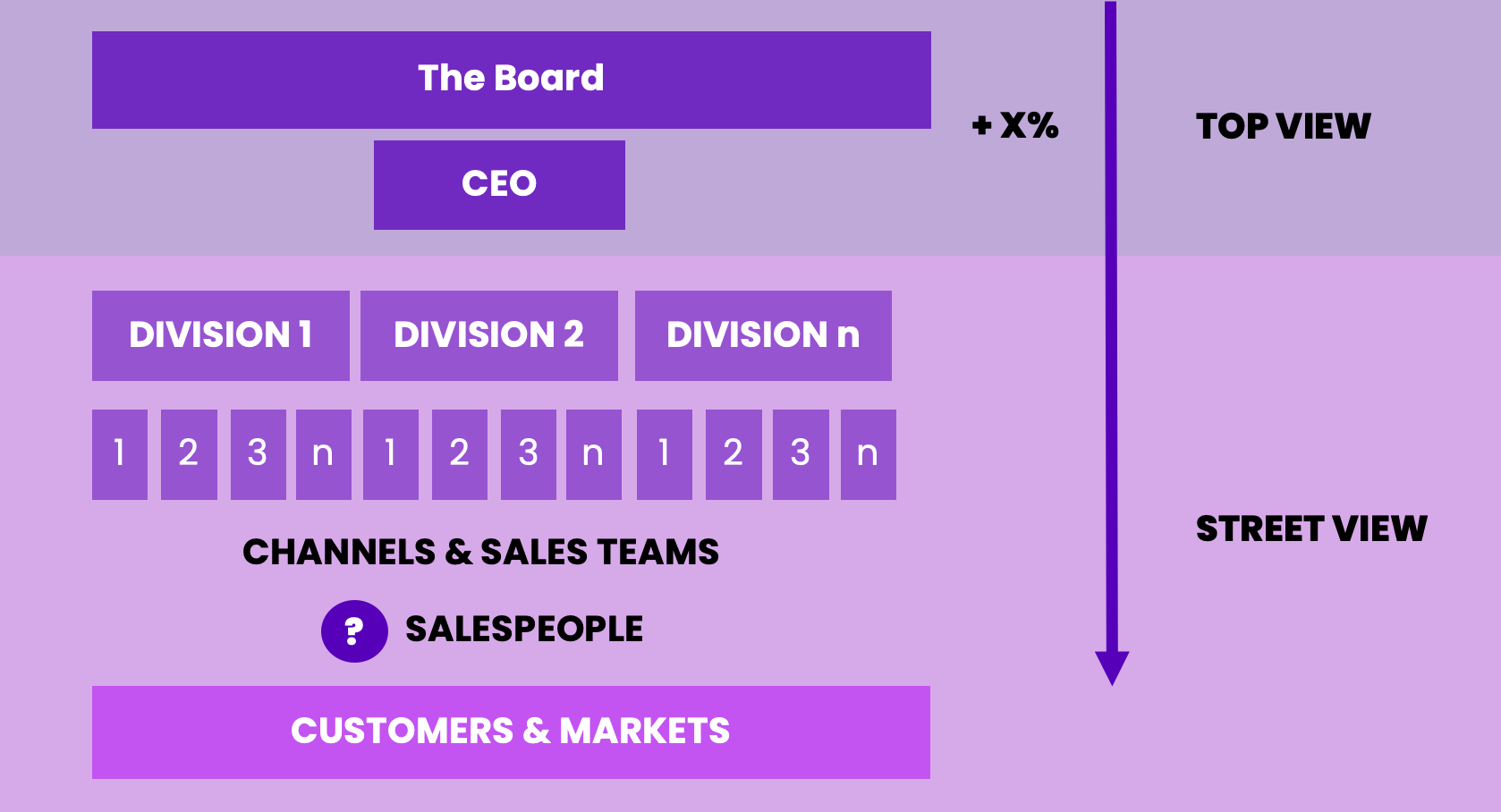
Once the goal has been set-up, starts a discussion about how the quota distributes between divisions, offerings, channels, sales teams and salespeople. The practice is strongly top-down driven, although naturally there is discussion about the realities. This discussion is rather hard, when management team and people operating in customer interfacing functions have a completely different view to the realities. There is a major gap between perspectives.

Due to this gap, the good intentions at goal setting can lead to very different outcomes at operational levels. If we look at the revenue projections for two salespeople, the sales person A could have a projection of +20% in revenue and the person B might have -20%. These two salespeople stand in very different realities. The top-down approach without connecting it to practical understanding of the customers current status and potential can lead to very unhealthy outcomes. That is part of the reason, why salespeople are suffering.
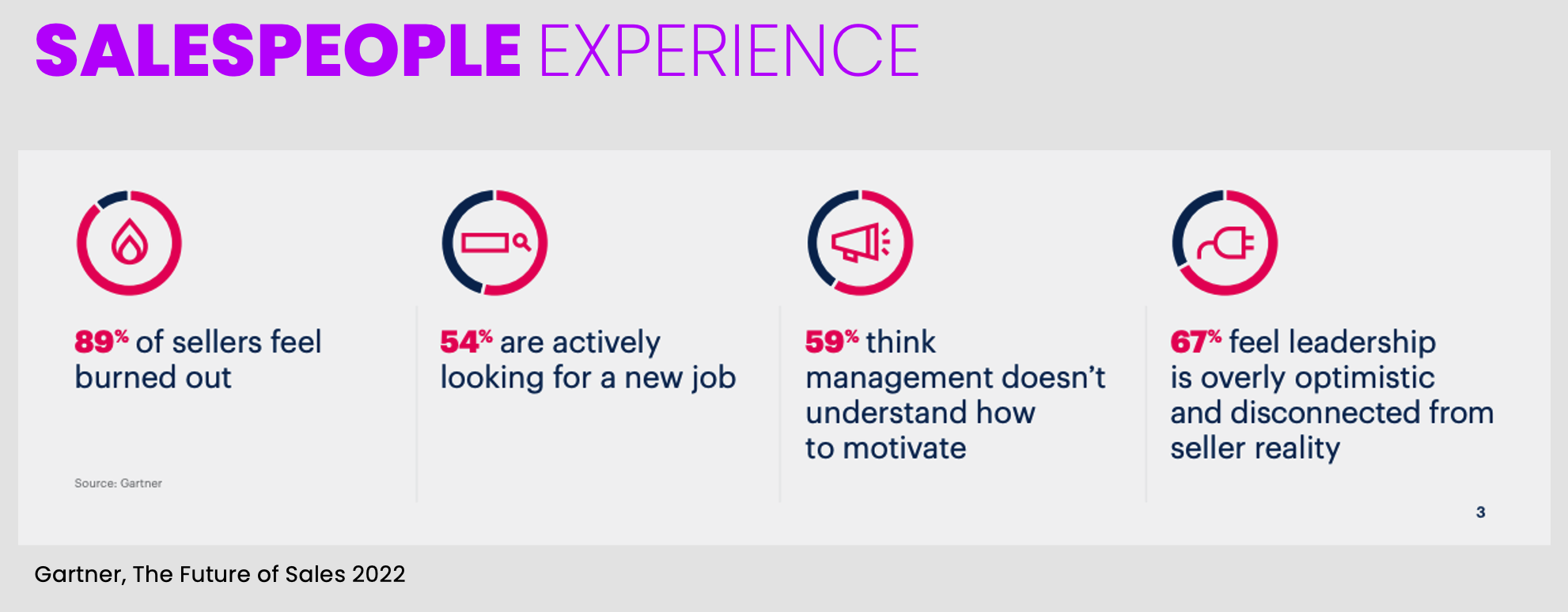
Sales practice is currently in major turmoil. The markets are more volatile than ever, the VUCA (Volatile, Uncertain, Complex and Ambiguous) environment is constantly shifting priorities. The expectations towards salespeople are constantly growing from customers' side as well as from inside. While the amount of data is constantly growing, it doesn't really make sales peoples' life easier, rather it takes away time from actual sales. According to Salesforce study, salespeople only have apr. 28% of their time available for what they are measured and rewarded by, meeting customers and actually doing sales.
The current status of budgeting and operational realities are driving sales people to leave their jobs and move elsewhere.
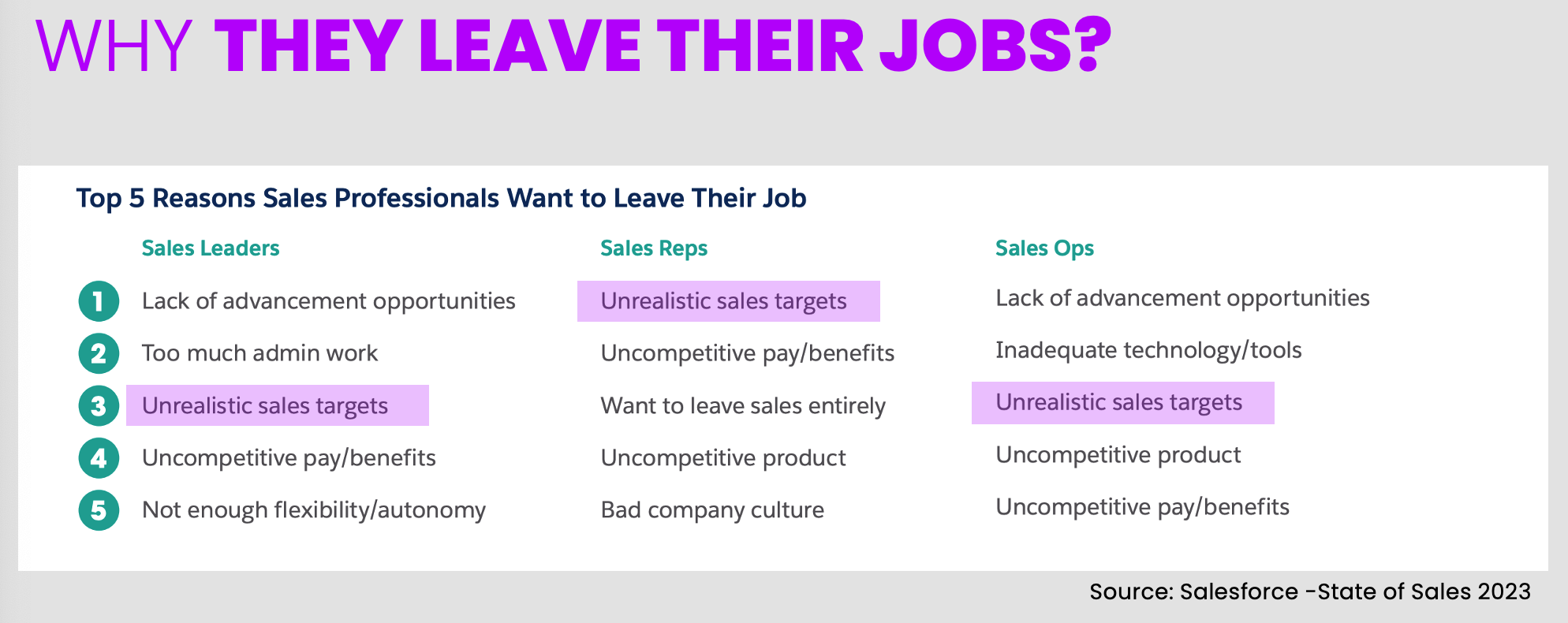
The primary reason for Sales Reps to leave their jobs is unrealistic sales targets. The root cause for this outcome is in the way sales quotas are set and revenue budgeting is implemented. Top-down with out operational reality insights has major implications. The cost of this is very high: 1) Finding a salesperson and hiring them is expensive. 2) It takes in average 2 years 3 months for sales person to breakeven and become a profitable team member. 3) The average length of employment is 1 year 9 months, which means that in average sales people don't breakeven at all. These figures are from Finnish sales professionals, but the logic is sound internationally. However, this is incredibly expensive and counter productive operating model.
In order to address the root challenge, salespeople need answers to two burning questions:

This is where 180ops can help. Our modelling and analysis approach is based on bottom-up and outside-in way of working. The object of our analysis is an individual customer, its relationship at the moment, the company and changes in it as well as the macro economic shifts around the company influencing the customer's decisions. This means that the existing customers are like sensors in the market giving us feedback and allowing us to see the bigger picture. However, the basic foundation is an individual customer.
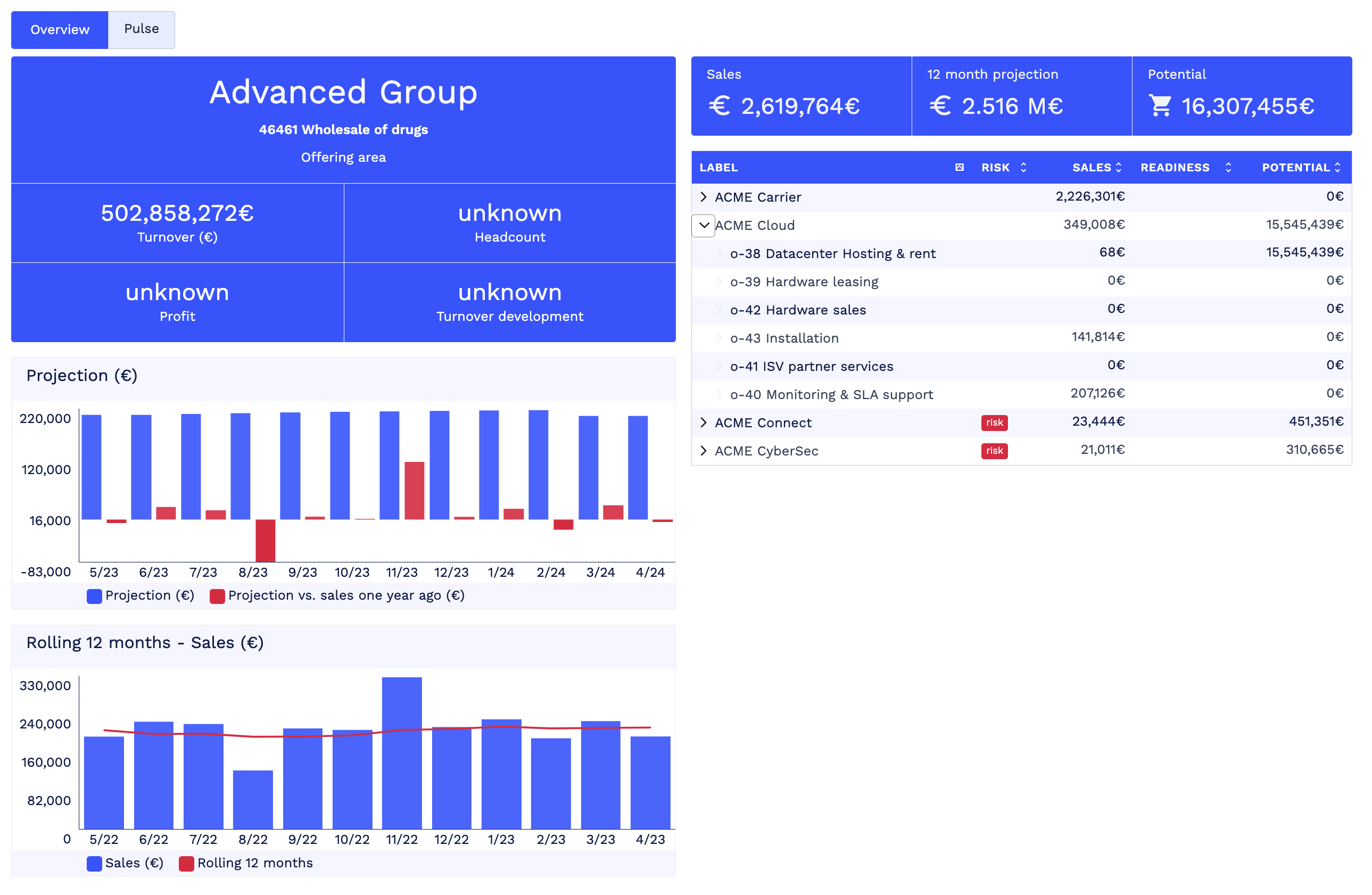
These individual customer cards are distributed to sales and customer service specialists via CRM and they have a story to tell:
- What is the billing level by month and rolling 12m biling
- What is the projection for the next 12 months
- From which offerings is the money coming from - is there room for up-selling or cross-selling
- Are there risks in defecting offering relationships or high readiness towards certaing offerings
For an account manager this is the foundation for customer specific account planning. Understanding the current state and discovering where to address the available time in order to turn potential in to billing, meet and exceed quota.
bottom-up approach to budgeting
The bottom-up and outside-in approach is capable of delivering facts and evidence based view to the markets. The primary value that it is offering, is in answering these four questions: What to sell, to whom, when and why.
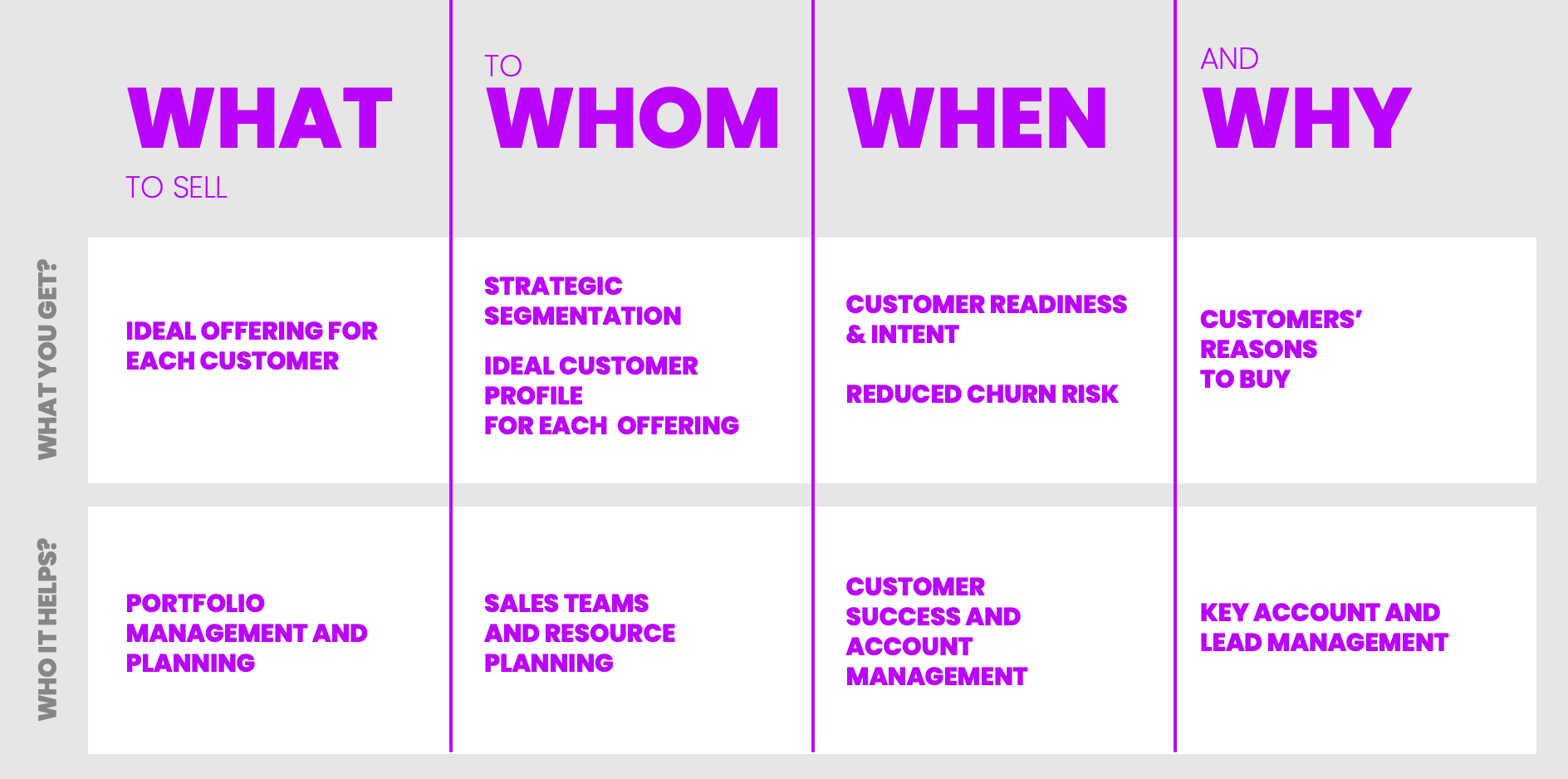
Facts and evidence based approach to budgeting is not only influencing the sales, but the overall profitability and growth of the company. More holistic approach to customer and market centricity is a sound solution to overall management. This type of holistic approach is an accelerator for sustainable business success, growth and profitability.
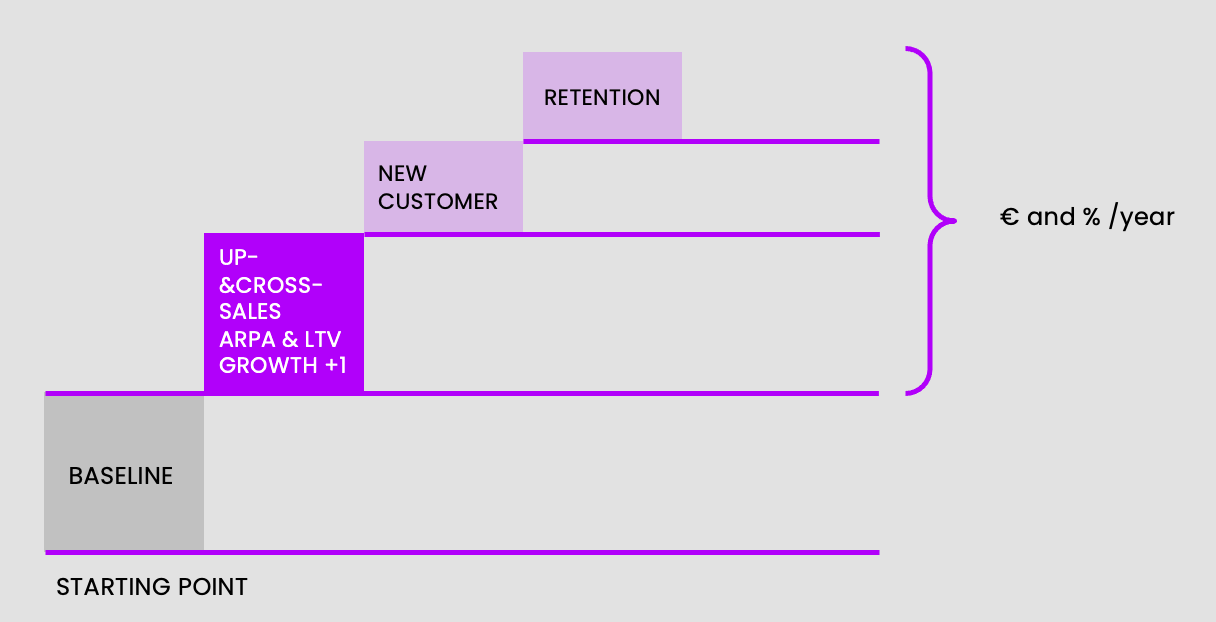
By approaching the challenges with 180ops, we are creating a bridge between executive view and operational realities.
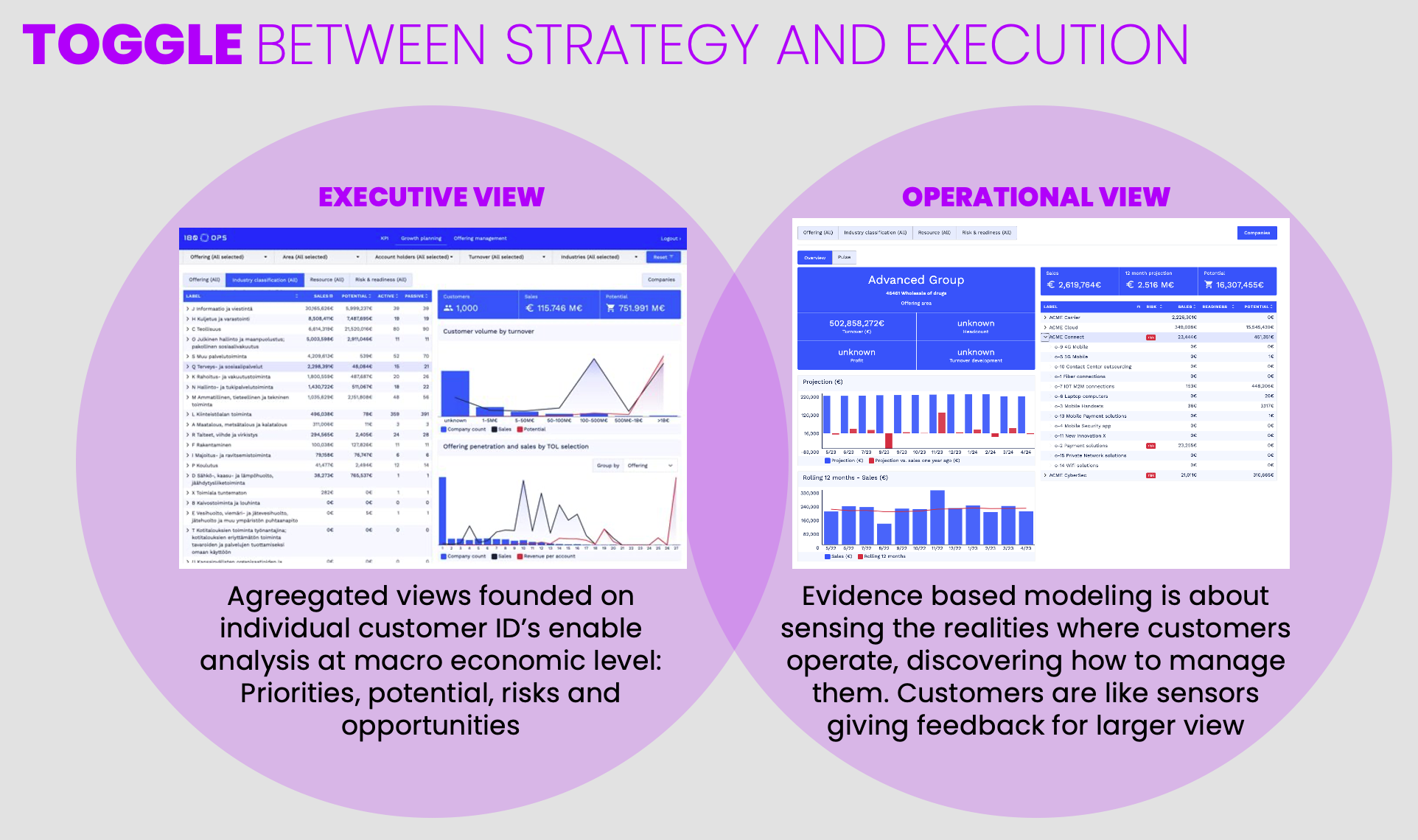
The solution to the root causes of budgeting challenges and salespeople suffering can be solved by flipping the approach 180-degrees: Bottom-up and outside-in. The burning questions need to be answered and the management must be capable of supporting the salespeople with data, show them direction and help them prioritize how they allocate their time to meet and exceed their quota.
